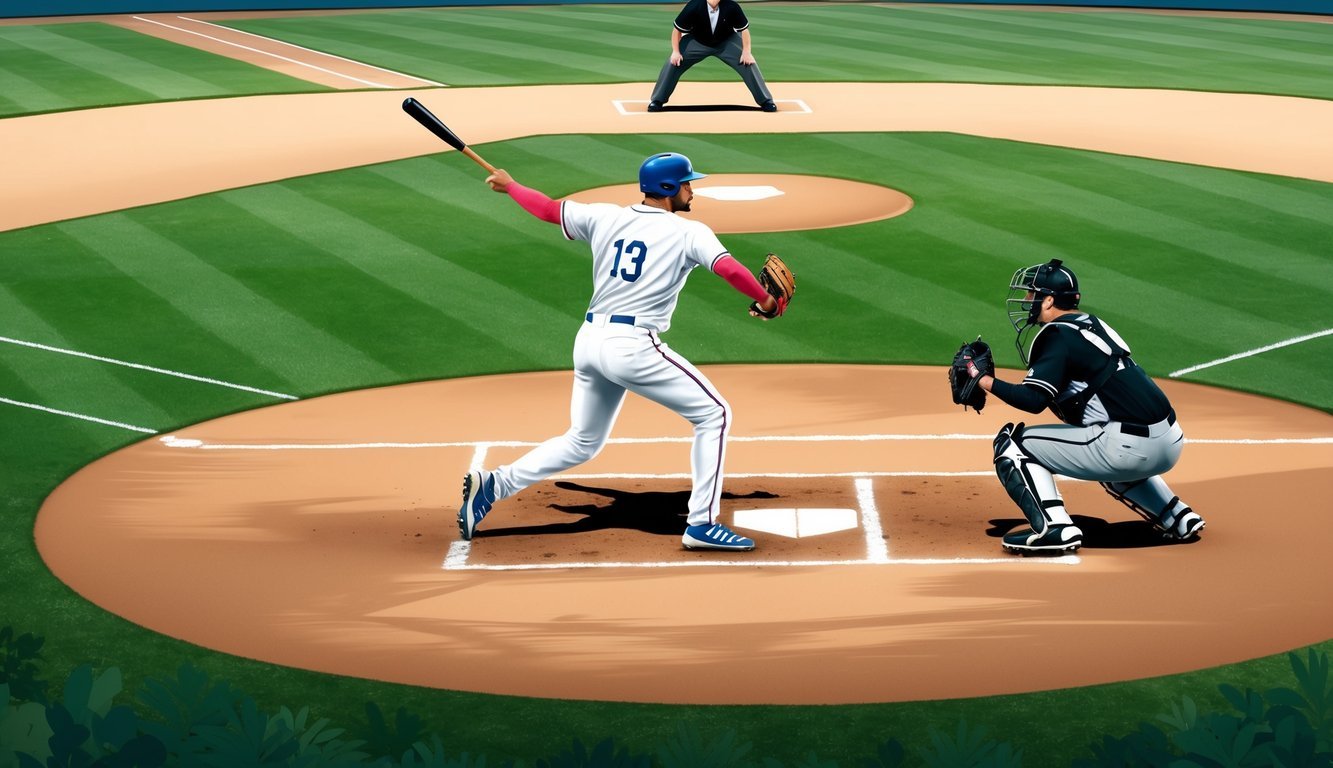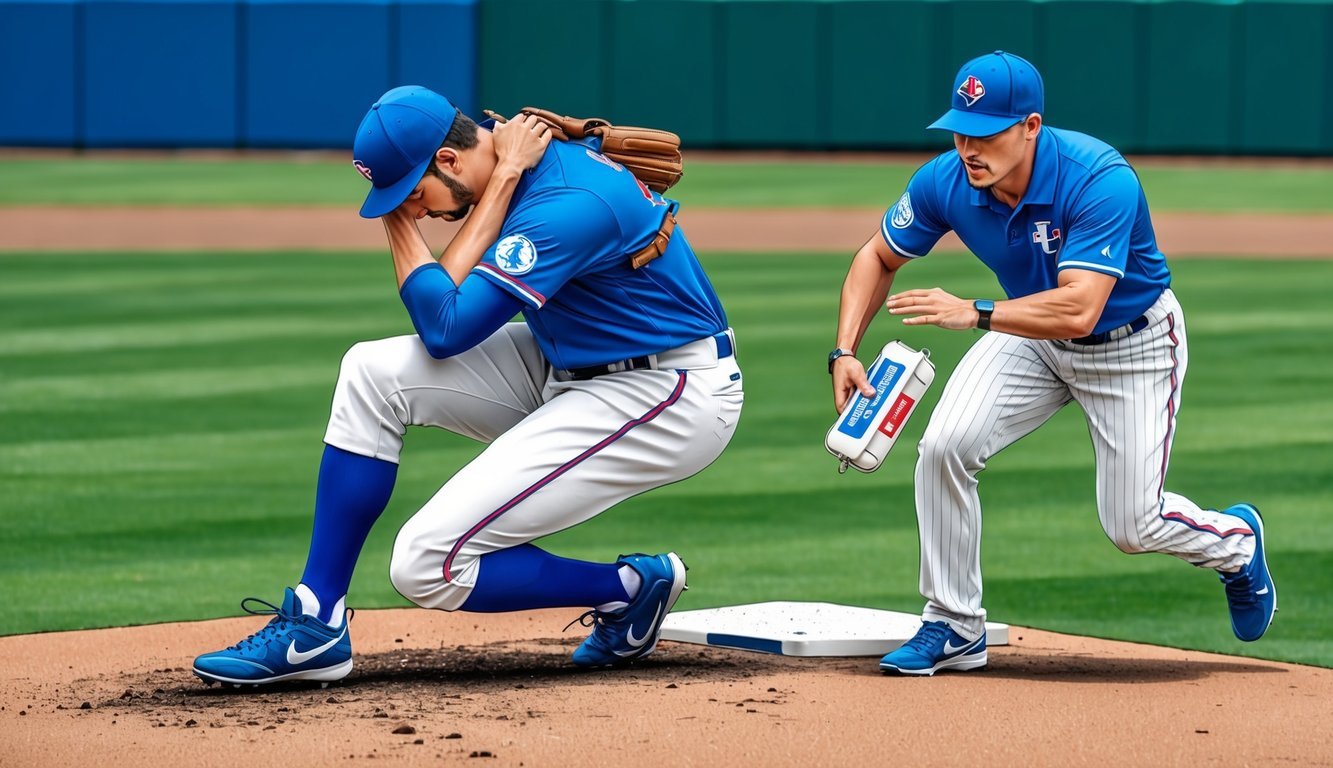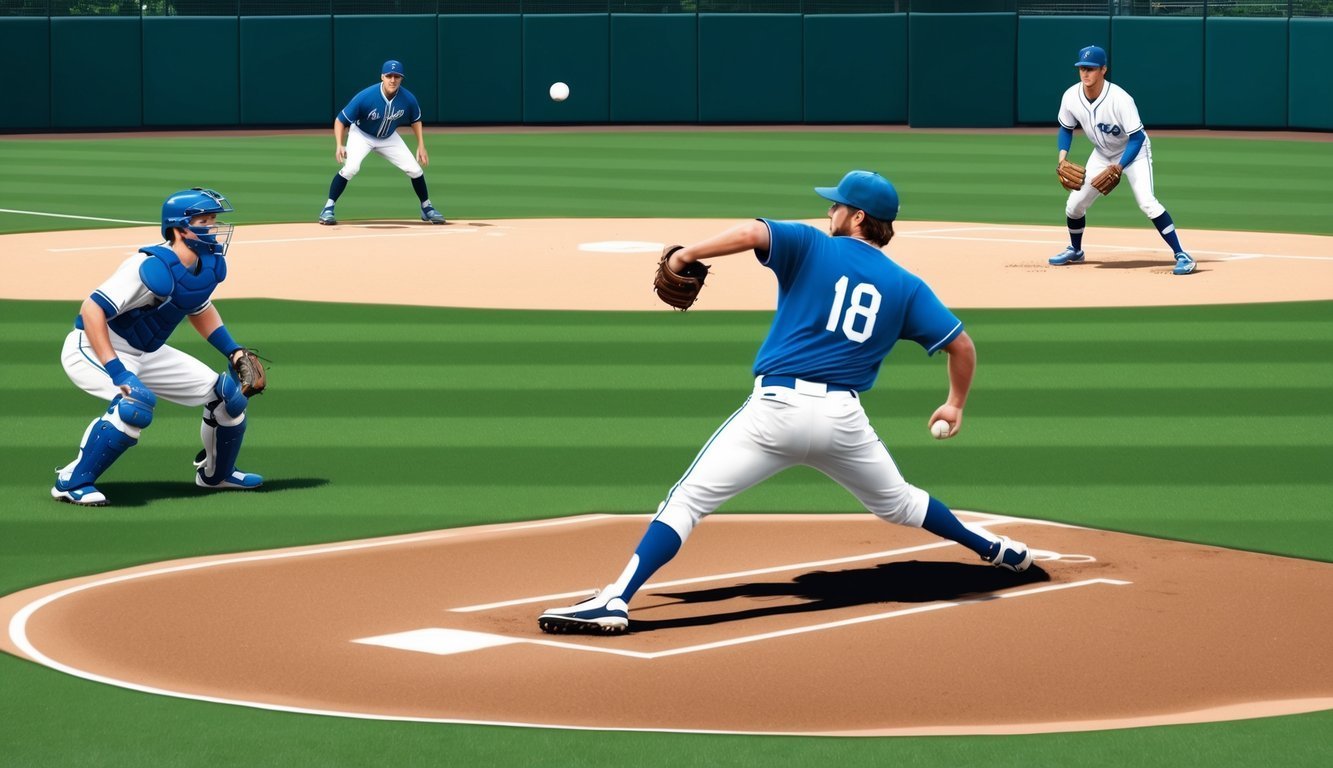Baseball fans eagerly anticipate the start of each new MLB season, and 2024 is no exception.
As teams gear up for another thrilling year on the diamond, all eyes are on the pitching mounds across the league. The top MLB pitchers for 2024 include a mix of established aces and rising stars, with Spencer Strider of the Atlanta Braves leading the pack.
Pitching remains a crucial element of America’s pastime, often making the difference between victory and defeat.
Elite hurlers like Strider combine blazing fastballs, devastating breaking pitches, and pinpoint control to keep batters guessing.
Their ability to dominate games and rack up strikeouts electrifies crowds and propels their teams toward postseason glory.
As the 2024 season unfolds, baseball enthusiasts will closely watch the statistical leaders in categories like ERA, strikeouts, and wins.
These numbers help tell the story of each pitcher’s performance and impact on their team’s success.
From young phenoms to seasoned veterans, the best arms in baseball will continue to showcase their skills and compete for the title of MLB’s top pitcher.
The Role of Pitchers in Baseball
Pitchers are the backbone of any baseball team’s defense.
They control the pace of the game and have a significant impact on the outcome of each play.
Starting Pitchers vs. Relievers
Starting pitchers typically begin the game and aim to pitch as many innings as possible.
They often have a wider range of pitches and focus on endurance.
Starters usually pitch every 4-5 days in a rotation.
Relievers, on the other hand, come in later in the game.
They often specialize in specific situations, like closing out games or facing particular batters.
Relievers may pitch more frequently but for shorter durations.
Both types of pitchers are crucial for a team’s success.
A strong starting rotation can keep a team competitive throughout the season.
Effective relievers can secure wins in close games.
Importance of the Ace Pitcher
The ace is a team’s best starting pitcher.
They often face the toughest opponents and pitch in crucial games.
Aces can change the momentum of a series or season.
Top aces like Max Scherzer or Gerrit Cole can dominate games with their skills.
They frequently lead their teams in innings pitched and strikeouts.
Aces also mentor younger pitchers and set the tone for the entire pitching staff.
Having a reliable ace gives managers confidence and flexibility in managing the rest of the rotation.
It can be a key factor in a team’s playoff chances.
Key Pitching Statistics

Pitching statistics provide crucial insights into a pitcher’s performance and effectiveness on the mound.
These numbers help evaluate pitchers and inform strategic decisions by teams and fans alike.
Understanding ERA and WHIP
ERA (Earned Run Average) measures the average number of earned runs a pitcher allows per nine innings pitched.
A lower ERA indicates better performance.
For example, an ERA of 3.00 means a pitcher gives up about 3 runs every 9 innings.
WHIP (Walks plus Hits per Inning Pitched) shows how many baserunners a pitcher allows per inning.
It’s calculated by adding walks and hits, then dividing by innings pitched.
A WHIP of 1.00 or lower is excellent, meaning the pitcher allows one or fewer baserunners per inning on average.
Both stats are key for assessing a pitcher’s effectiveness in preventing runs and keeping runners off base.
Wins, Losses, and Saves Explained
Wins (W) are credited to the pitcher on the winning team who was in the game when their team took the lead for good.
Losses (L) go to the pitcher on the losing team who gave up the go-ahead run.
Saves (SV) are awarded to relief pitchers who finish a close game under specific conditions.
To earn a save, a pitcher must:
- Enter with a lead of 3 runs or less
- Pitch at least 1 inning
- Finish the game without relinquishing the lead
While wins and losses can be influenced by run support, saves directly reflect a reliever’s ability to close out tight games.
Strikeouts, Innings Pitched, and Walks
Strikeouts (SO) showcase a pitcher’s ability to overpower or outsmart batters.
High strikeout totals often indicate dominant stuff and good command.
Innings Pitched (IP) measures a pitcher’s workload and durability.
Starting pitchers aim for higher IP totals, while relievers typically have lower numbers.
Walks (BB) reflect a pitcher’s control.
Fewer walks mean better command and fewer free baserunners.
The BB/9 (walks per 9 innings) stat provides a standardized look at walk rates.
These stats work together to paint a picture of a pitcher’s effectiveness:
- High SO, low BB = Great command and stuff
- High IP, low ERA = Consistent, quality performance
- Low WHIP, high SV = Effective relief pitching
Today’s Top MLB Pitchers
The current MLB pitching landscape showcases a mix of established aces and rising stars.
These elite hurlers consistently dominate opposing lineups with their impressive arsenals and pitching prowess.
Pitching Legends in the Making
Justin Verlander continues to defy age, maintaining his status as one of baseball’s top arms.
His pinpoint control and devastating breaking pitches keep batters guessing.
Max Scherzer, another veteran ace, brings intensity and a diverse pitch mix to every start.
Jacob deGrom, when healthy, is nearly unhittable.
His blazing fastball and sharp slider form a lethal combination.
Gerrit Cole anchors the Yankees’ rotation with his power pitching and ability to rack up strikeouts.
Corbin Burnes has emerged as a true ace for the Brewers.
His cutter-slider combo baffles hitters, leading to impressive strikeout totals and low ERAs.
Players to Watch in the Current Season
Spencer Strider of the Atlanta Braves is making waves with his electric fastball and wipeout slider.
His ability to miss bats has him on track for a potential Cy Young campaign.
Logan Gilbert is turning heads with the Mariners.
His imposing 6’6″ frame and extended delivery make his mid-90s fastball even more challenging for batters to pick up.
Shane McClanahan of the Rays boasts a nasty repertoire that includes a high-90s heater and a devastating changeup.
He’s quickly becoming one of the AL’s top lefties.
These rising stars are pushing the boundaries of pitching excellence, keeping fans excited about the future of MLB pitching.
Pitching Techniques and Repertoire

Mastering a diverse arsenal of pitches and honing precise control are key elements that separate elite MLB pitchers from the rest.
These skills allow hurlers to keep batters guessing and maintain dominance on the mound.
The Art of the Fastball
The fastball is the foundation of most pitchers’ repertoires.
It comes in several varieties, including the four-seam, two-seam, and cut fastball.
The four-seam fastball is the straightest and often the fastest, reaching speeds over 100 mph for some pitchers.
Two-seam fastballs have more movement, typically sinking or tailing as they approach the plate.
Cut fastballs, or “cutters,” break slightly to the pitcher’s glove side.
Elite fastball pitchers combine velocity with pinpoint control.
They can paint the corners of the strike zone and change eye levels to keep hitters off balance.
Breaking Balls: Slider and Curveball
Breaking balls are crucial for disrupting a batter’s timing and creating weak contact.
The slider is a sharp, late-breaking pitch that moves laterally and down.
It’s typically faster than a curveball but slower than a fastball.
Curveballs have a more pronounced downward break and are often slower.
They can range from 12-6 movement (like a clock face) to sweeping horizontal breaks.
Effective breaking ball pitchers can throw these pitches for strikes or use them as chase pitches outside the zone.
Mastering the ability to consistently locate breaking balls is a hallmark of top-tier pitchers in the MLB.
Injuries and Recoveries in Pitching

Pitching injuries have become increasingly common in MLB, with Tommy John surgery rates reaching new highs.
Proper recovery and prevention strategies are crucial for keeping pitchers healthy and performing at their best.
Common Pitching Injuries
Elbow injuries, particularly ulnar collateral ligament (UCL) tears, are among the most prevalent issues for pitchers.
These often require Tommy John surgery, sidelining players for 12-18 months.
Shoulder problems like rotator cuff strains and labrum tears also frequently occur.
Data shows that 35.3% of major league pitchers had undergone Tommy John surgery by 2023.
High-velocity pitchers seem especially prone to injury.
Players like Shane Bieber and Spencer Strider have recently faced setbacks due to arm troubles.
Fatigue-related injuries are on the rise too.
Some experts point to the pitch clock as a potential factor, giving pitchers less recovery time between throws.
Strategies for Recovery and Prevention
Teams are investing heavily in injury prevention programs.
These often include:
- Specialized strength and conditioning routines
- Improved biomechanics analysis
- Careful pitch count management
- Advanced recovery techniques like cryotherapy
Many clubs now use wearable technology to monitor pitcher workloads and detect early signs of fatigue.
Rest and proper offseason training are emphasized to reduce injury risk.
For recovering pitchers, structured rehabilitation programs are key.
These typically involve gradual increases in throwing intensity and distance, followed by simulated game situations before returning to competitive play.
Some teams are experimenting with six-man rotations to give starters extra rest between outings.
This approach aims to reduce strain on arms over the long regular season and into the postseason.
Hall of Fame Pitchers

The Baseball Hall of Fame honors the greatest pitchers in MLB history.
These legendary arms have left an indelible mark on America’s pastime through their exceptional performances and career achievements.
Many of these iconic pitchers have not only dazzled fans with their skills but have also led their teams to victory, securing a place in baseball lore.
Notably, some of these legends hold the record for the most MLB championships in history, a testament to their talent and leadership on the mound.
Their contributions have shaped the game and inspired future generations of players to strive for excellence.
Careers That Shaped Baseball
Nolan Ryan, nicknamed “The Ryan Express,” dominated batters for an incredible 27 seasons.
His blazing fastball and seven no-hitters set him apart.
Greg Maddux, known for pinpoint control, won four consecutive Cy Young Awards from 1992-1995.
Sandy Koufax had a shorter but brilliant career, including four no-hitters and three Cy Young Awards.
Recent inductees like Pedro Martinez and Randy Johnson brought their own flair to the mound.
Martinez’s changeup baffled hitters, while Johnson’s towering presence and slider earned him the nickname “The Big Unit.”
Criteria for Entering the Hall of Fame
Pitchers must excel over a long career to earn Hall of Fame consideration.
Key factors include:
- Career wins (300+ is often a benchmark)
- Strikeouts
- ERA
- Cy Young Awards
- No-hitters and perfect games
- World Series performances
Voters also consider a pitcher’s impact on the game and dominance during their era.
Clayton Kershaw and Max Scherzer are building strong cases for future induction with their impressive stats and accolades.
Some pitchers enter on the first ballot, while others may wait years for recognition.
The voting process ensures only the truly elite join baseball’s most prestigious club.
